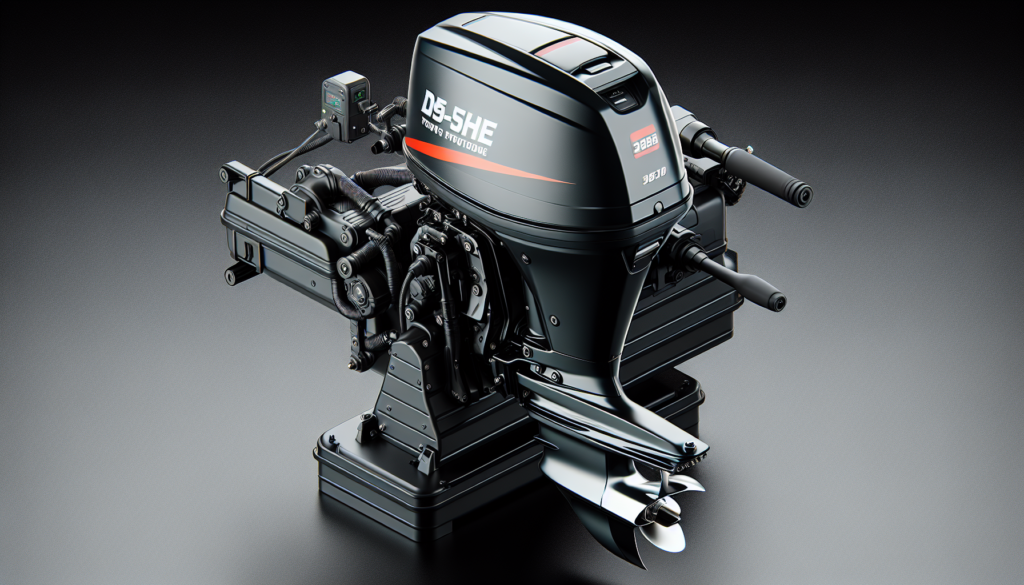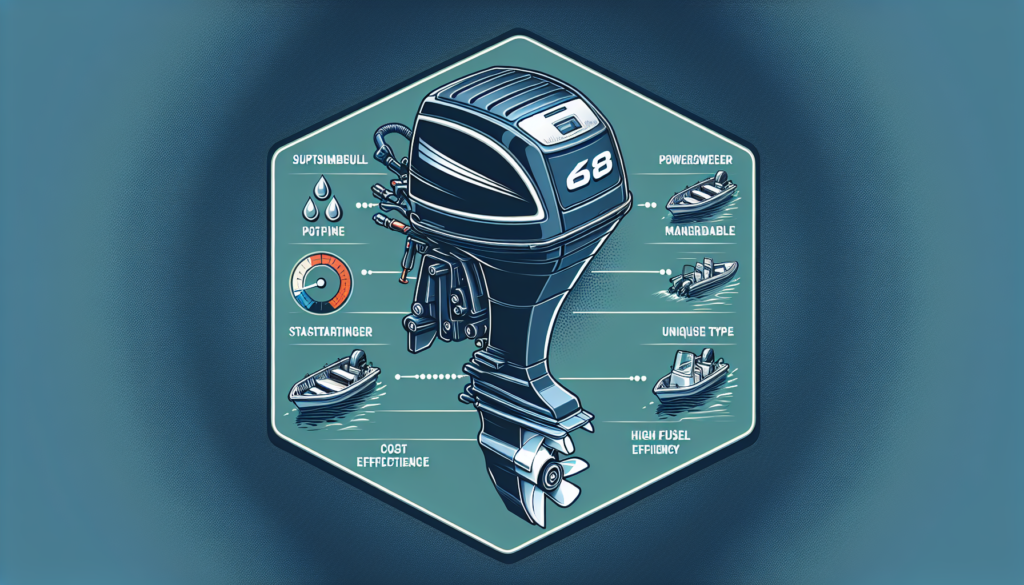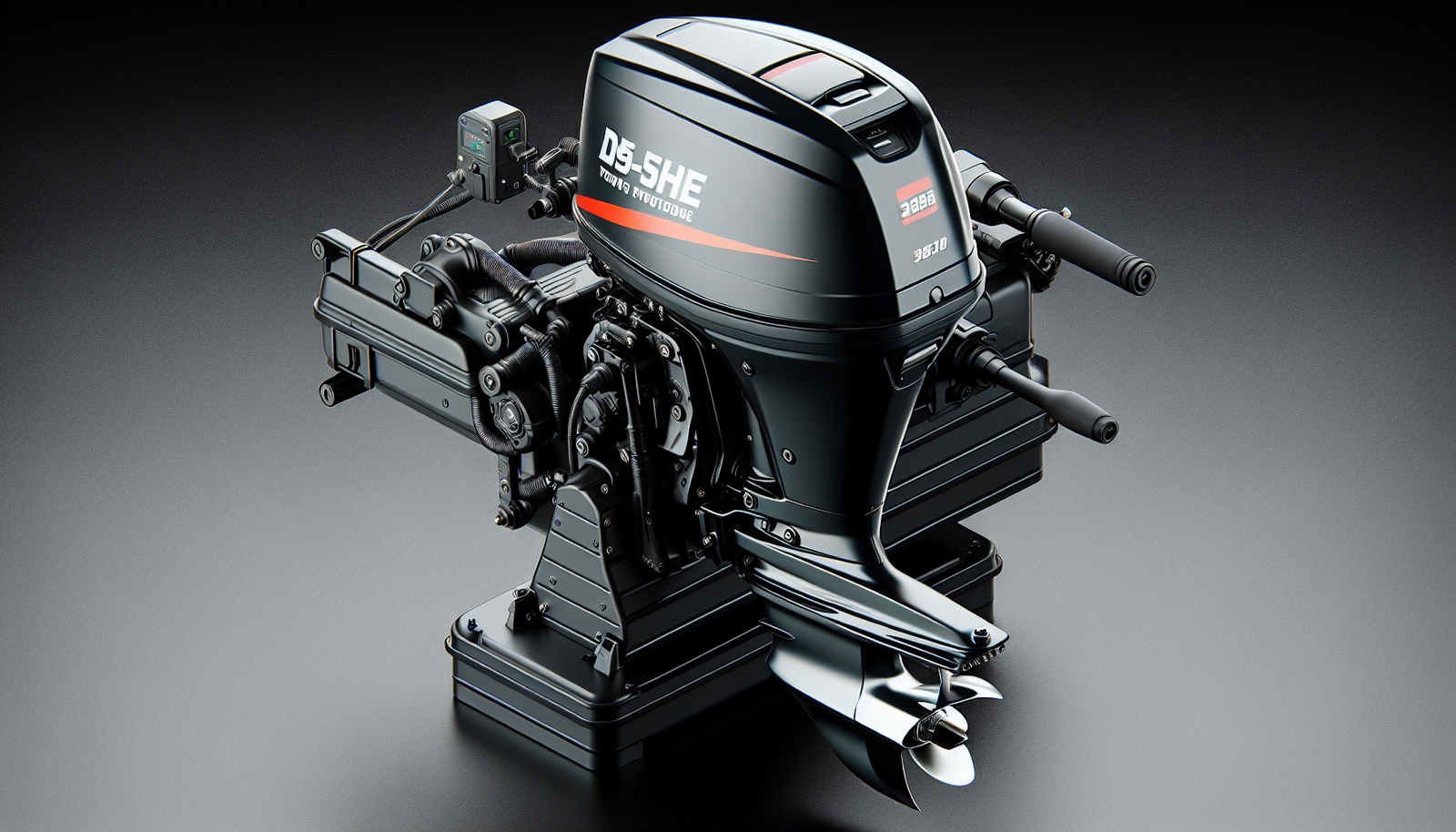Choosing the perfect outboard motor for your small boat can be quite a task, especially with the wide variety of options available in the market. The “Buyer’s Guide To Choosing The Best Outboard Motor For Small Boats” is designed to assist you in making the best choice. It brilliantly breaks down everything you need to know – from understanding horsepower and the differences between two-stroke and four-stroke engines, to decoding fuel efficiency and noise levels. Packed with expert advice and handy tips, this guide will ensure you’re equipped enough to make an informed choice, rather than second-guessing at the seller’s counter.

Understanding the Types of Outboard Motors
Before making a purchase, you must understand the different types of outboard motors available and their distinct characteristics. A better understanding will enable you to make a more informed decision.
Two-Stroke Engines
Two-stroke engines are one of the most common outboard motors you’ll come across. They’re called “two-stroke” because they complete a power cycle with two strokes of the piston during only one crankshaft revolution. This type of motor is known for its powerful acceleration and lightweight design. However, they’re also notoriously louder, less fuel-efficient, and produces more greenhouse gases compared to their four-stroke counterparts.
Four-Stroke Engines
Four-stroke engines, on the other hand, complete a power cycle with four strokes of the piston, making them typically larger and heavier than two-stroke motors. However, they tend to be quieter, cleaner, and more fuel-efficient. Unlike the two-stroke, they also don’t need a fuel-oil mixture as they have a separate reservoir for oil, reducing your preparation time before you head out on the water.
Electric Outboard Motors
Electric outboard motors are the newest type of motor in the market and are quickly gaining popularity due to their eco-friendliness. They’re virtually silent and don’t emit any pollutants, making them ideal for those who care about their environmental footprint. However, they do require regular recharging, which may not be convenient for long boating trips or in remote areas with no power supply.
Identifying Your Boat’s Configuration and Requirements
To choose the most suitable motor for your boat, you need to consider your boat’s size, type, and hull design.
Boat Size And Weight
Knowing your boat’s size and weight is fundamental. Larger and heavier boats generally require more powerful motors to move efficiently on the water. Conversely, a motor that’s too powerful might overpower and damage a smaller, lighter boat.
Boat Type
Your boat type also affects your choice. For example, a lightweight sailboat may not need as much power as a fishing boat that carries heavy equipment. If you own a high-speed powerboat, you may prefer a high-performance two-stroke engine for its exceptional acceleration.
Hulls Design
The hull’s design, whether flat, v-shaped, or multi-hulled, also features into the equation. Flat hulls create less drag and typically require less horsepower than v-shaped or multihull designs. Remember, a suitable motor should provide enough power to propel the boat while respecting its limitations.

Determining the Right Horsepower for your Outboard Motor
When choosing a motor, you must determine the right horsepower (HP) for your boat.
Calculating Required Horsepower
To calculate required horsepower, consult your boat manufacturer’s guidelines first. These guidelines consider the boat size, weight, and hull design. If unsure, seek professional advice to avoid risking safety or performance.
Considering The Boat’s Intended Use
The boat’s intended use also influences horsepower requirements. For example, if you frequently engage in water activities like skiing that require rapid acceleration and high speed, you’ll need more horsepower. However, for leisurely fishing trips, a lower horsepower motor that prioritizes fuel efficiency may be better.
Understanding Maximum Horsepower Rating
Boats often have a maximum horsepower rating, which you should never exceed. Ignoring this could lead to poor handling, instability, or even potential accidents.
The Importance of the Right Shaft Length
Choosing the right shaft length is crucial for your motor’s performance and durability.
Determining Shaft Length
To determine the right shaft length, measure the distance from the top of your boat’s transom down to the bottom of the hull or keel. This measurement is important as the propeller needs to operate fully submerged, while the power head should stay clear of the spray.
Understanding The Consequences Of Wrong Shaft Length
Choosing an incorrect shaft length can affect your boating experience. A too-short shaft might result in inadequate propulsion as the propeller may not be fully submerged. In contrast, a too-long shaft might cause excessive drag and damage the motor due to collision with underwater objects.
Adjusting The Mounting Height
Motor mounting height is about finding balance. The key is to position the motor so the propeller operates at the optimal depth while minimizing spray on the power head.

Considering Motor Weight and Boat Balance
The motor weight and boat balance are critical aspects of your boating experience and safety.
Impact of Motor Weight on Boat Performance
The weight of the motor directly impacts the boat’s performance. A motor that is too heavy may put excessive stress on the transom and adversely affect your boat’s speed and fuel efficiency. Conversely, a too-light motor might not have enough power to drive your boat effectively.
Keeping the Boat Balanced
Ensuring your boat is well-balanced not only enhances your comfort and safety but also optimizes fuel efficiency and speed. Always aim for an even distribution of weight, considering all passengers, gear, and the motor itself.
Considering Distribution of Weight
Proper distribution of weight is vital and involves strategically placing equipment and passengers to maintain balance. Remember, an imbalanced boat can lead to poor handling and potential safety hazards.
Taking Fuel Efficiency into Account
Outboard motor fuel efficiency is a significant factor to bear in mind, as it influences running costs.
Fuel Economy of Two-Stroke Vs Four-Stroke
As stated earlier, four-stroke motors are typically more fuel-efficient than two-stroke motors. Over time, the fuel savings can make up for the higher initial investment of a four-stroke engine.
Fuel Economy of Gas Vs Electric Motors
Electric motors are extremely fuel-efficient – in fact, they don’t use fuel at all. However, they need regular recharging, which could become a limiting factor on extended trips.
Understanding the Impact of Horsepower on Fuel Efficiency
Remember, more horsepower equates to more fuel consumption. Therefore, opt for a motor that offers just the right amount of power for your needs to avoid unnecessary fuel expenditures.

Evaluating Reliability and Maintenance Needs
Reliability and maintenance needs can affect your overall boating experience and cost.
Maintenance Requirements of Different Motor Types
Four-stroke engines generally require more regular maintenance than two-stroke engines. Meanwhile, electric motors may need less frequent servicing, but battery replacement will be necessary eventually.
Longevity and Durability of Outboard Motors
Longevity and durability depend on several factors, including maintenance, usage, and initial build quality. Proper care and maintenance can extend the lifespan of any outboard motor considerably.
Availability of Spare Parts and Servicing
Availability of spare parts and servicing is also a factor. Some brands or models may have a more extensive support network, making it easier and cheaper to get parts and service when needed.
Impact of Noise And Vibration
Noise and vibration levels vary between different types of outboard motors and can significantly impact the comfort and enjoyability of your boating experience.
Noise Levels of Different Outboard Motor Types
Generally, two-stroke engines are louder than four-stroke engines, while electric motors are virtually silent. If noise levels are a concern for you, this needs to be taken into account.
Vibration Levels of Various Motors
Vibrations can make your boat ride less comfortable and can even cause parts of your boat to loosen or break off over time. Typically, electric motors vibrate less than gas-powered engines.
Balancing Performance and Comfort
Ultimately, it’s about finding the right blend of performance and comfort. Your personal tolerance for noise and vibration, and your performance requirements, will determine what type of motor is right for you.
Understanding Motor Controls and Features
Motor controls and features can enhance your boating experience and contribute to safety on the water.
Different Types of Motor Controls
From tiller handles to sophisticated digital controls, outboard motors come with a variety of control options. For example, tiller handles are common on small outboards, offering direct control. In contrast, larger outboards generally feature remote controls that can be mounted to your boat’s dashboard.
Safety Features to Look for
Certain features, such as an emergency engine stop button or a protective casing around the propeller, can improve safety. Throttle tension control, electric start, and power tilt are other useful safety features.
Convenience and Comfort Features
Convenience and comfort features can make your boating experience more enjoyable. These might include a built-in fuel gauge, power trim and tilt, or even integrated wireless connectivity for ease of control.
Factors That Influence The Cost of Outboard Motors
The cost of your outboard motor will depend on various factors, including the type of motor, required maintenance, and additional features.
Base Price of Different Motors Types
As a general rule, two-stroke engines are usually cheaper than four-stroke engines. Electric motors, while often pricier upfront, can potentially save you money in the long run due to their low running costs.
Cost of Maintenance and Repairs
Keep in mind that maintenance and repair costs can add up over time. Two-stroke engines generally have lower servicing costs, while four-stroke engines may have higher servicing costs but less frequent servicing intervals.
Impact of Motor Features on Price
Features can also significantly impact the price. Motor controls and safety or convenience features can add to the cost, but may be worth considering for the enhanced boating experience they offer.
In conclusion, buying an outboard motor requires careful consideration of your needs, preferences, and budget. By taking the time to understand the types of motors, the requirements of your boat, the importance of horsepower and shaft length, factors like motorweight, fuel efficiency, maintenance needs, noise levels, and cost, you’ll be well on your way to choosing the right outboard motor for your boat. This is not just a purchase, it’s an investment in your boating future.

